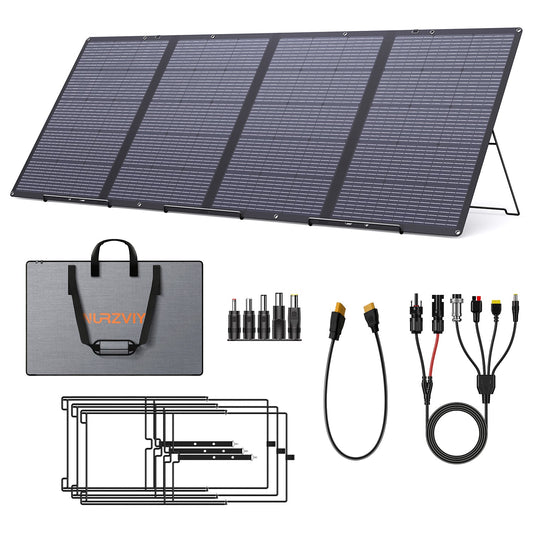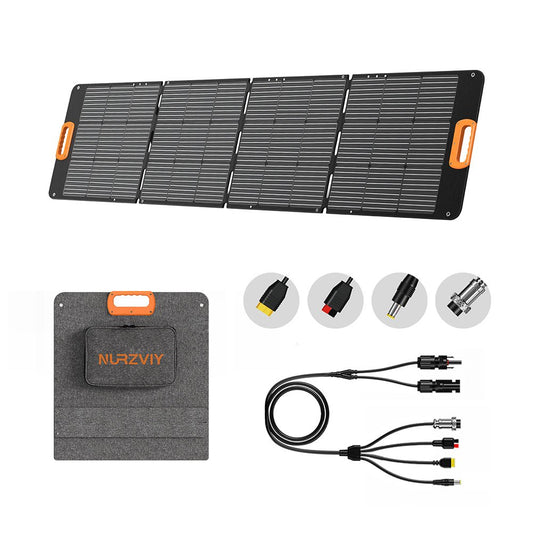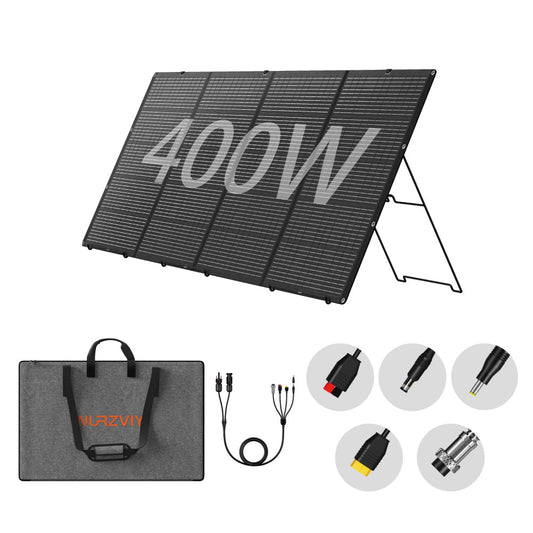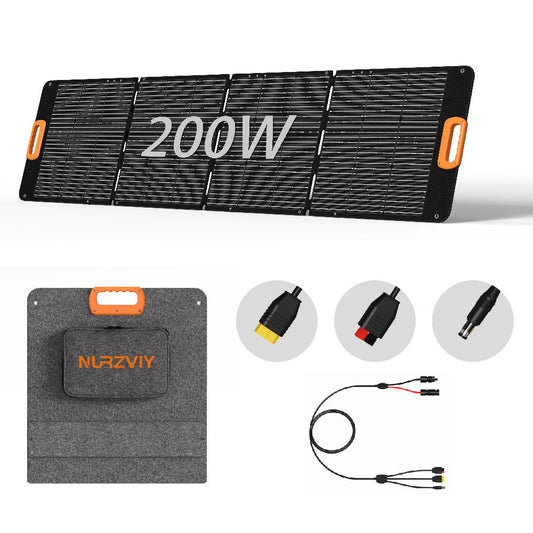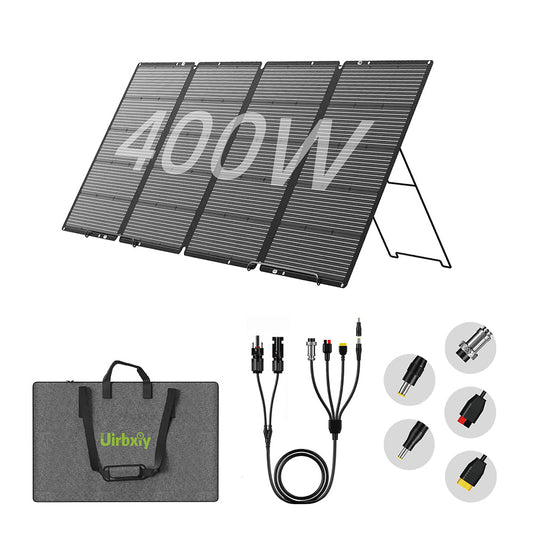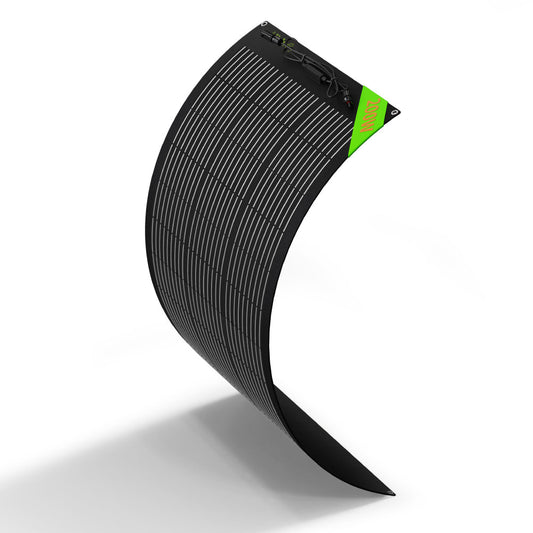Information You Must Know About Solar Panel
07 Apr 2023
0 comments
Solar power is a rapidly growing industry and an increasingly popular way to generate electricity. One of the most convenient and portable ways to harness solar energy is through the use of solar portable chargers. In this blog post, we'll explore how these devices work, how to set up a solar system for camping, and the different types of solar panels available.
How do Solar Portable Chargers Work?
Solar portable chargers work by converting sunlight into electricity. They are typically made up of a photovoltaic (PV) panel, a battery, and an inverter. The PV panel captures sunlight and converts it into direct current (DC) electricity, which is then stored in the battery. The inverter then converts the DC electricity into alternating current (AC) electricity, which can be used to power electronic devices.
When using a solar portable charger, it's important to keep in mind that the charging speed will vary depending on the amount of sunlight available. In general, the more sunlight the charger is exposed to, the faster it will charge.
When using a solar portable charger, it's important to keep in mind that the charging speed will vary depending on the amount of sunlight available. In general, the more sunlight the charger is exposed to, the faster it will charge.
How to Set Up a Solar System for Camping?
If you're planning on camping and want to use solar power, setting up a solar system is a great way to generate electricity without the need for a generator or other fuel-powered equipment. Here's a basic guide to setting up a solar system for camping:
1. Choose a solar panel: There are many different types of solar panels available, including monocrystalline, polycrystalline, and thin-film. Monocrystalline panels are the most efficient but also the most expensive, while thin-film panels are the least efficient but also the most affordable.
2. Choose a battery: The battery is an important component of any solar system, as it stores the electricity generated by the solar panel. There are many different types of batteries available, including lead-acid, lithium-ion, and nickel-cadmium.
3. Choose an inverter: The inverter converts the DC electricity generated by the solar panel into AC electricity that can be used to power electronic devices. Make sure to choose an inverter that is compatible with the voltage and wattage of your battery and electronic devices.
4. Set up the solar panel: Once you've chosen your solar panel, battery, and inverter, it's time to set up the system. Place the solar panel in a sunny location and connect it to the battery using a charge controller. The charge controller regulates the flow of electricity between the solar panel and the battery to prevent overcharging and damage to the battery.
5. Connect the inverter: Finally, connect the inverter to the battery and use it to power your electronic devices.
1. Choose a solar panel: There are many different types of solar panels available, including monocrystalline, polycrystalline, and thin-film. Monocrystalline panels are the most efficient but also the most expensive, while thin-film panels are the least efficient but also the most affordable.
2. Choose a battery: The battery is an important component of any solar system, as it stores the electricity generated by the solar panel. There are many different types of batteries available, including lead-acid, lithium-ion, and nickel-cadmium.
3. Choose an inverter: The inverter converts the DC electricity generated by the solar panel into AC electricity that can be used to power electronic devices. Make sure to choose an inverter that is compatible with the voltage and wattage of your battery and electronic devices.
4. Set up the solar panel: Once you've chosen your solar panel, battery, and inverter, it's time to set up the system. Place the solar panel in a sunny location and connect it to the battery using a charge controller. The charge controller regulates the flow of electricity between the solar panel and the battery to prevent overcharging and damage to the battery.
5. Connect the inverter: Finally, connect the inverter to the battery and use it to power your electronic devices.
Solar Panel Types
As mentioned earlier, there are several different types of solar panels available. Here's a brief overview of the most common types:
Monocrystalline: Made from a single crystal of silicon, monocrystalline panels are the most efficient but also the most expensive.
Polycrystalline: Made from multiple crystals of silicon, polycrystalline panels are less efficient but more affordable than monocrystalline panels.
Thin-film: Made from a thin layer of photovoltaic material, thin-film panels are the least efficient but also the most affordable.
Monocrystalline: Made from a single crystal of silicon, monocrystalline panels are the most efficient but also the most expensive.
Polycrystalline: Made from multiple crystals of silicon, polycrystalline panels are less efficient but more affordable than monocrystalline panels.
Thin-film: Made from a thin layer of photovoltaic material, thin-film panels are the least efficient but also the most affordable.
Conclusion
In conclusion, solar power is a great way to generate electricity while camping or on the go. With the right equipment and setup, you can harness the power of the sun to charge your electronic devices and enjoy the great outdoors without the need for fuel-powered equipment.
